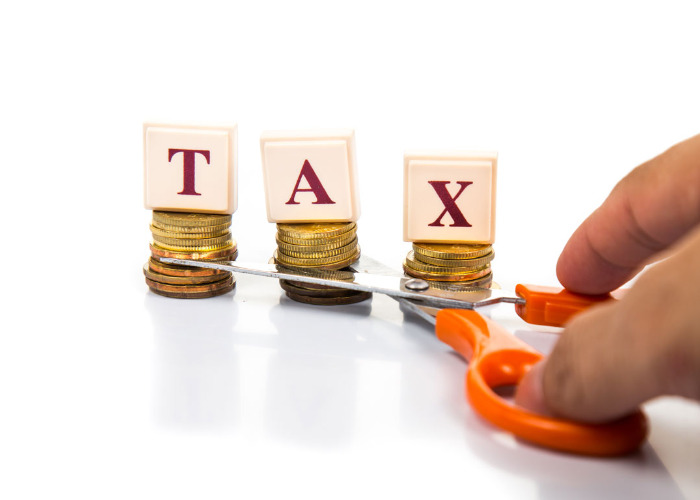Pension tax relief to be slashed in 2016 Budget, reports claim

Higher earners could lose thousands of pounds if the Chancellor introduces flat-rate pension tax relief in his March Budget.
After several years of speculation, fears are growing that Chancellor George Osborne is finally poised to take away higher-rate tax relief for pension contributions. If this the case, then the vital cut-off date for investors could well be Wednesday 16th March – the day of his next Budget.
Tax sweetener set to be abolished
At present, taxpayers earn tax relief on their pension contributions at what’s known as their highest personal marginal rate of tax.
So for basic-rate (20%) taxpayers, a £100 pension contribution costs just £80 after £20 of tax relief.
For higher-rate (40%) taxpayers, a net £60 is needed to make a £100 contribution, with £40 in tax relief.
And for additional-rate (45%) taxpayers, the net figure falls to £55, plus £45 in tax relief.
However, various media reports say the Treasury now appears to have concrete plans to end pension tax relief at the 20%, 40% and 45% rates, instead replacing it with a universal tax relief at a single, flat rate.
This flat-rate relief will surely be higher than 20% and lower than 40%, with 33% an oft-quoted middle ground.
Of course, what this means is that 40% and 45% taxpayers will be worse off, as they will lose valuable tax relief. On the other hand, tax relief rising from 20% to, say, 33% will hugely benefit 20% taxpayers. In fact, the higher the flat rate of relief, the better-off basic-rate taxpayers and non-taxpayers will be.
When might this happen?
As is normal with Budget announcements, were the Chancellor to alter pension tax relief then this change would normally take effect from the start of the next tax year or the one thereafter. The 2015/16 tax year begins on 6th April, so this appears to be the earliest point it could be introduced.
With the Chancellor's Budget speech taking place on 16th March, this would give you 21 days to pour money into your pension in order to secure last-minute tax relief at 40% or 45%.
Because of this it’s highly likely the Chancellor will also announce 'anti-forestalling' measures in his Budget speech, so as to end higher rates of pension tax relief on that same day. Otherwise, investment company Hargreaves Lansdown reckons the Treasury could lose £6 billion in extra tax relief as a wave of money pours into pensions between Budget Day and the end of the tax year.
This is a big opportunity for all workers
If higher rates of pension tax relief do end on 16th March, then this pension reform produces two very different outcomes for workers, depending on their personal incomes.
For higher- and additional-rate taxpayers, the best strategy is to maximise your pension contributions before 16th March, either through lump sums or by bringing forward future contributions to be made on or before 15th March.
However, for basic-rate taxpayers, the optimal strategy is quite the opposite. You should delay planned pension contributions until after 5th April, as this may allow you to claim higher tax relief at the new flat rate.
What flat-rate relief would be worth
Clearly, the higher the flat rate of tax relief, the better off low earners will be.
With flat-rate relief at 33%, for every £2 you pay in the Government adds £1. With relief at 25%, the Government would add £1 to every £3 you contribute. Similarly, with 30% relief, for every £7 you pay in the Government adds £3.
The following table, courtesy of Hargreaves Lansdown, shows how much higher earners stand to lose under various scenarios.
|
40% taxpayer |
|||
| Contribution |
£10,000 |
£40,000 |
£100,000 |
| Current tax relief system |
£4,000 |
£16,000 |
£40,000 |
| 25% flat rate |
£2,500 |
£10,000 |
£25,000 |
| Potential loss |
£1,500 |
£6,000 |
£15,000 |
| 30% flat rate |
£3,000 |
£12,000 |
£30,000 |
| Potential loss |
£1,000 |
£4,000 |
£10,000 |
| 35% flat rate |
£3,500 |
£14,000 |
£35,000 |
| Potential loss |
£500 |
£2,000 |
£5,000 |
|
45% taxpayer |
|||
| Contribution |
£10,000 |
£40,000 |
£100,000 |
| Current tax-relief system |
£4,500 |
£18,000 |
£45,000 |
| 25% flat rate |
£2,500 |
£10,000 |
£25,000 |
| Potential loss |
£2,000 |
£8,000 |
£20,000 |
| 30% flat rate |
£3,000 |
£12,000 |
£30,000 |
| Potential loss |
£1,500 |
£6,000 |
£15,000 |
| 35% flat rate |
£3,500 |
£14,000 |
£35,000 |
| Potential loss |
£1,000 |
£4,000 |
£10,000 |
As you can see, top earners making large pension contributions could forfeit tens of thousands of pounds in lost tax relief, unless they act swiftly.
Either act now or sit back and wait
In summary, regardless of your pension arrangements (whether private, company or otherwise), you may need to act fast in order to claim maximum tax relief if you're a higher earner.
On the other hand, if you're a basic-rate taxpayer or non-taxpayer, then sit back and await developments, as delaying your contributions could bring you far greater rewards from April onwards!
Looking to save for your retirement? Compare stocks & shares ISAs and SIPPs
Now read these:
Winners and losers of the new State Pension
Why the self-employed face a poor retirement
How UK pensions compare to the rest of the world
Comments
Be the first to comment
Do you want to comment on this article? You need to be signed in for this feature